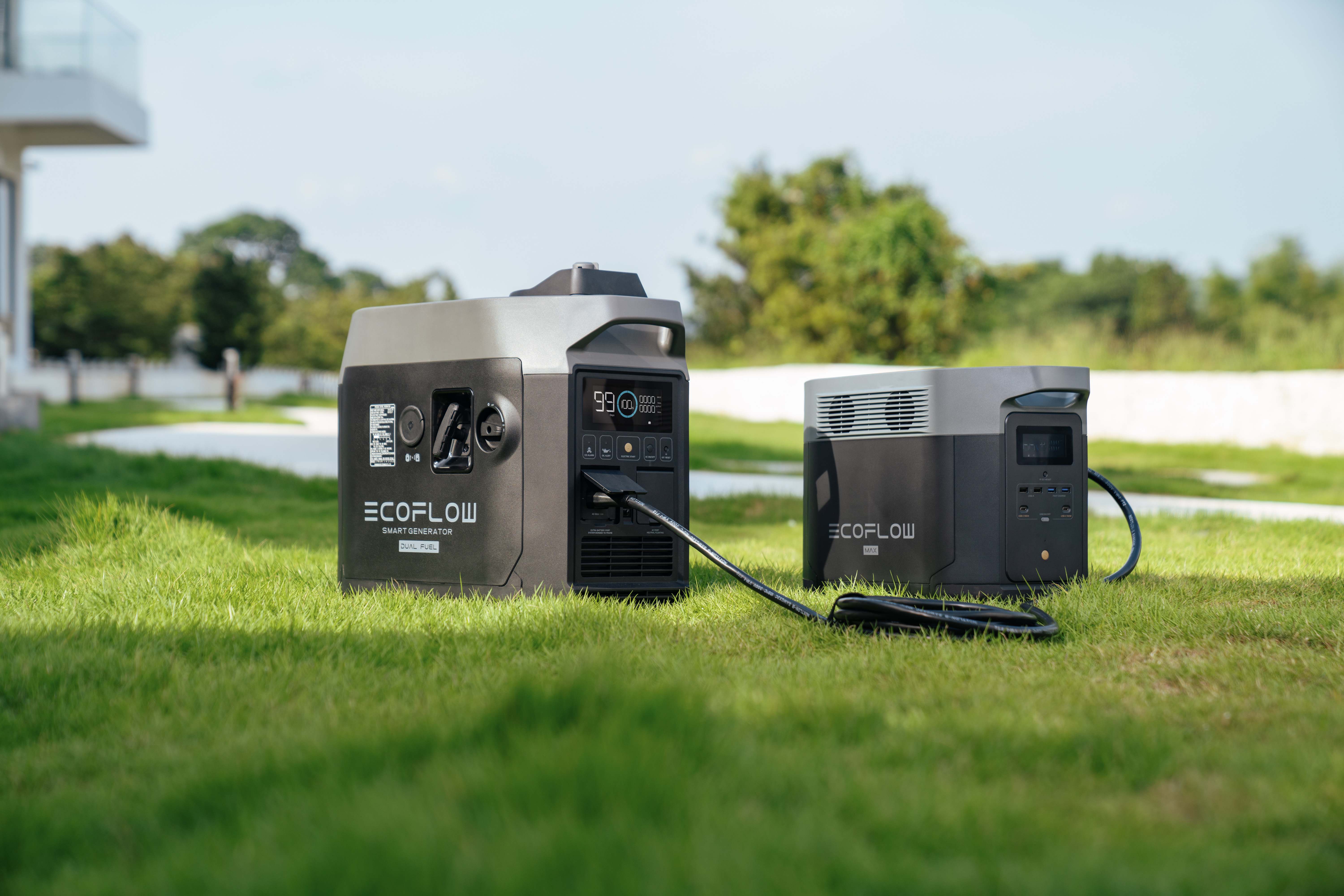- 1. What Does Amp Hour (Ah) Actually Mean
- 2. Common Battery Types and Their Typical Capacities
- 3. Amp Hours vs Watt Hours: What's the Difference?
- 4. How to Estimate Runtime Using Ah
- 5. Factors That Affect Actual Runtime
- 6. Standard Battery Sizes and What They Can Power
- 7. Choosing the Correct Battery Based on Amp Hours
- 8. Real-World Power Solutions: Backing Up Ah Knowledge with the Proper Battery
- Conclusion: Know Your Ah, Power Smarter
- Frequently Asked Questions (FAQs)
What Are Amp Hours on a Battery?
- 1. What Does Amp Hour (Ah) Actually Mean
- 2. Common Battery Types and Their Typical Capacities
- 3. Amp Hours vs Watt Hours: What's the Difference?
- 4. How to Estimate Runtime Using Ah
- 5. Factors That Affect Actual Runtime
- 6. Standard Battery Sizes and What They Can Power
- 7. Choosing the Correct Battery Based on Amp Hours
- 8. Real-World Power Solutions: Backing Up Ah Knowledge with the Proper Battery
- Conclusion: Know Your Ah, Power Smarter
- Frequently Asked Questions (FAQs)
You are getting ready for a weekend camping trip and sorting through your gear. Your battery pack reads "100Ah." You ask yourself—is this going to be enough to run my mini fridge overnight? Maybe charge my phone and laptop a couple of times?
Here's the simple answer:
"100Ah" is the theoretical capacity of the battery to deliver 1 amp of current for 100 hours, or 10 amps for 10 hours, at some voltage. It's a measure of capacity, and it shows how much energy the battery can hold and deliver over time.
But how do you go about figuring out how many amp hours you actually need? This tutorial breaks down what amp hours (Ah) are measuring, how they relate to runtime in terms of device wattage, and how to use Ah and Wh at the same time to properly size a battery system.
1. What Does Amp Hour (Ah) Actually Mean
Amp hours (Ah) is a measure of an electrical charge. In simple terms, it means the quantity of current a battery can supply over time. The calculation is straightforward:
Amp Hours (Ah) = Amps × HoursSo,
a battery with 100Ah can theoretically provide:
1 amp for 100 hours
10 amps for 10 hours
20 amps for 5 hours
Keep in mind that this is a theoretical capacity. Real-world performance can vary based on battery type, efficiency, and usage patterns (we’ll cover that shortly).
2. Common Battery Types and Their Typical Capacities
Battery Type | Common Name | Rechargeable | Typical Capacity (mAh) | Voltage (V) | Best For |
Alkaline | AA (LR6, 15A) | No (mostly) | 1800 – 2700 | 1.5 | Remotes, toys, clocks |
NiMH | AA (HR6) | Yes | 700 – 2800 | 1.2 | Cameras, flashlights, game controllers |
Li-ion | 14500 | Yes | 600 – 2000+ | 3.6 – 3.7 | Laptops, phones, power banks |
LiFePO₄ | IFR14500 | Yes | 500 – 750 | 3.2 | Solar generators, RVs, off-grid systems |
Li-Mn | CR AA | No | ~2000 | 3 | Smoke detectors, key fobs |
NiCd | R6 | Yes | 600 – 1200 | 1.2 | Power tools (old) |
Zinc-Carbon | R6 | No | 600 – 1600 | 1.5 | Basic flashlights, radios |
⚠️ Note: Capacities can vary by brand and product. Check manufacturer specs for actual numbers.
How to Use This Table
Compare capacity vs. voltage: Higher voltage Li-ion and LiFePO₄ batteries yield more watt-hours (Wh) per amp-hour.
Rechargeable or non-rechargeable: Choose rechargeable in long-term or heavy use.
Match chemistry to use case: For solar and portable power stations, LiFePO₄ batteries are the gold standard because of their safety, cycle life, and usable depth of discharge.
3. Amp Hours vs Watt Hours: What's the Difference?
Whereas amp hours are used to measure current over duration, most units are rated at watts. So that you have a better view of how long the battery will power your equipment, you need to convert from amp hours to watt hours (Wh).
Watt Hours (Wh) = Amp Hours (Ah) × Voltage (V)
Example:
12V, 100Ah battery → 12 × 100 = 1,200Wh
That's 1,200 watt-hours of energy that the battery held, which is how much power it could provide to devices over a period of time.
Why is that significant? Because the majority of devices (like computers, refrigerators, and lighting) measure power consumption in watts, no
4. How to Estimate Runtime Using Ah
Once you've converted Wh to Ah, you can make an estimate of how long your battery will run powering a specific device:
Runtime (hours) = Battery Watt Hours ÷ Device Wattage
Example 1: Operating a 60W Mini Fridge
Battery: 12V, 100Ah → 1,200Wh
Fridge: 60W
→ 1,200Wh ÷ 60W = 20 hours
Example 2: Wrapping Up a 60W Laptop
Laptop: 60W
3 hours charged = 180Wh
→ You'd be able to charge it 6–7 times using a 100Ah battery (assuming an 85% inverter efficiency)
Quick Tip: Make up for Inverter Loss
If you’re using an AC inverter, expect 10–15% energy loss. So a 1,200Wh battery might only deliver 1,020Wh–1,080Wh of usable power to your devices.
5. Factors That Affect Actual Runtime
While calculating battery runtime may seem straightforward, real-world performance can vary significantly due to several key factors:
Inverter Efficiency
Most AC inverters experience some kind of energy loss in conversion, typically in the range of 10–15%. That means not all battery power stored reaches your devices.
Depth of Discharge (DoD)
Not all batteries can be deep-discharged without affecting their longevity. For instance:
A 100Ah AGM battery may deliver only 50Ah of useful capacity (50% DoD).
A lithium battery—such as LiFePO₄—can be discharged to a safe depth of 80–90%, delivering much more useful power.
Temperature
Battery capacity is also sensitive to temperature. Elevated or low temperatures lower capacity and efficiency, especially under outdoor or exposed conditions.
Discharge Rate
The faster you discharge power, the weaker your battery will become—a phenomenon characterized by Peukert's Law. For example, drawing 10 amps for 10 hours will maybe produce less useful energy than drawing 1 amp for 100 hours because there is more internal resistance and energy lost at high discharge rates.


6. Standard Battery Sizes and What They Can Power
Battery Size | Voltage | Capacity (Wh) | Can Power |
10Ah | 12V | 120Wh | Smartphones, LED lights, USB fans |
50Ah | 12V | 600Wh | Laptop, router, camping lights |
100Ah | 12V | 1,200Wh | Mini fridge, CPAP machine, small power tools |
200Ah | 12V | 2,400Wh | TVs, full-size fridge, Wi-Fi + lighting combo |
7. Choosing the Correct Battery Based on Amp Hours
Before buying a battery, it's useful to know your daily energy need. Here's how to choose the correct Ah rating:
Step 1: Sum Device Wattages
Guess the number of watts each device will use × hours of daily use. Total = daily Wh consumption.
Step 2: Calculate to Ah
If you're on a 12V system:
Ah required = Total Wh ÷ 12
Example: 1,500Wh per day use → 125Ah battery required (plus margin for inverter loss)
Step 3: Allow for Surge Loads
Equipment like refrigerators, microwaves, or pumps may have large startup (surge) power requirements. Make sure your battery and inverter can handle them.
Step 4: Consider Portability, Expandability, and Recharging
Will you be solar-recharging? Do you plan to take the system camping? Can the battery grow with your needs? These are all questions you should ask yourself before you buy.
8. Real-World Power Solutions: Backing Up Ah Knowledge with the Proper Battery
When you understand how amp hours work, you'll want a battery system that puts those figures at your fingertips—whether for lighting up a campsite, home business, or preparing for grid outages.
That's where portable power stations like EcoFlow come in.
Products like the EcoFlow DELTA 2 Max orDELTA Pro offer:
High usable capacity (up to 2kWh and more)
Real-time usage tracking (see power consumption + remaining runtime at a glance)
Expandable storage (add extra batteries as your needs grow)
Quick recharging via solar, AC, or car
High surge output to power devices like fridges or equipment
Whether you need 50Ah or 500Ah of equivalent energy, EcoFlow helps to eliminate the guesswork that comes with sizing and runtime—so you can plan with confidence.


Conclusion: Know Your Ah, Power Smarter
Amp hours aren't something you see plastered on a sticker—they're the key to understanding how many hours your battery will charge the things you value. If you're weathering a blackout, going off-grid, or simply being prepared, the ability to use Ah and Wh to size your battery system gives you the power.
Looking for a lightweight power system in which the guessing game is eliminated when it comes to capacity? EcoFlow's intelligent, modular battery solutions let you power your life—your way.
Frequently Asked Questions (FAQs)
1. Is a higher Ah battery better?
Not always—but it depends on your needs.
A greater amp hour (Ah) rating means greater energy storage capacity and generally more between-charging durability. It's the ideal choice if you need to run power-draining devices or extended runtime. However, higher Ah-rated batteries are also bigger, heavier, and more expensive. Choose the Ah that reflects your actual use.
2. A 100 amp-hour battery - how long would it last?
Depending on what you're running.
For example, a 12V 100Ah battery = 1,200 watt-hours (Wh) of capacity. If you’re running a 100W device: 1,200 ÷ 100 = 12 hours
With inverter losses, actual runtime might be 10–11 hours
3. Is a 4.0 Ah battery more powerful than a 2.0 Ah?
Yes, in terms of capacity.
A 4.0Ah battery contains twice the energy of a 2.0Ah battery at an equal voltage. It will run a device twice as long. Power (watts) is also a function of voltage and discharge rate, however. More Ah = not necessarily more instantaneous power, though. More runtime = more Ah.
4. How many amp-hours should a battery contain?
It depends on your total energy needs.
First, calculate how many watt-hours (Wh) you consume daily. Next, divide by the voltage of the battery to get the amp hours you need:
Ah = Total Wh ÷ Voltage
Example:
Daily usage = 1,200Wh
Battery voltage = 12V
→ Minimum 100Ah (factoring in buffer for losses)
5. How long will a 100Ah battery run on an appliance that is 40W?
With a 12V 100Ah battery (1,200Wh):
1,200Wh ÷ 40W = 30 hours runtime (theoretical).
After accounting for inverter loss (~15%), you'll have around 25–26 hours of actual runtime.
6. Can you increase amp hours on a battery?
Yes—by connecting batteries in parallel.
When batteries are connected in parallel (positive to positive, negative to negative), their Ah adds up while voltage stays the same. For example:
Two 12V 100Ah batteries in parallel = 12V, 200Ah system
Some systems, like the EcoFlow DELTA Pro, enable modular expansion where you can expand Ah without the need to hand-wir